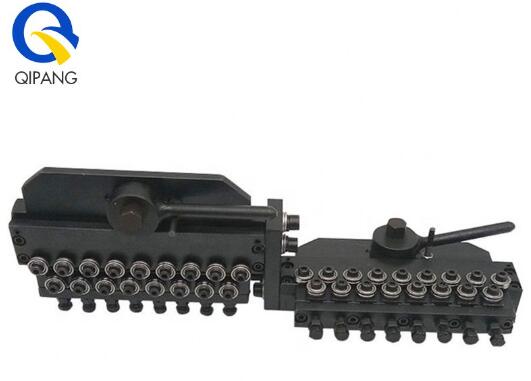Wire Straightening: Unraveling the Mysteries of Helix and Cast
Wire straightening is a critical process in various industries, ensuring that wires meet specific quality standards before they are used in manufacturing. Two key factors in wire straightening are "helix" and "cast," representing deviations from the ideal straight form. Understanding these terms and the role of different roller setups in eliminating them is crucial for achieving precision in wire straightening processes.
Decoding Helix and Cast: What Do They Represent?
Cast:
Cast refers to the diameter of the circle formed by a wire when it's cut from a spool and laid on a flat surface. This deviation can result in a circular or arched shape instead of a straight line. Cast can be caused by various factors, including the coiling process, the spooling tension, or the inherent characteristics of the wire.
Helix:
Helix, on the other hand, represents the vertical height of the wire from the flat surface. It occurs when the wire takes a helical or spiral shape rather than lying flat. Similar to cast, helix can be influenced by the coiling and spooling processes, as well as the tension applied during these stages.
The Role of Roller Setups in Removing Cast and Helix
Eliminating cast and helix requires careful consideration of the wire straightening equipment, specifically the roller setups. Different roller configurations are designed to address specific deviations and bring the wire back to its intended straight form.
Selecting the Right Roller Setup:
Straightening Rollers:
Straightening rollers are the fundamental components in addressing cast and helix. These rollers are strategically positioned to apply pressure to the wire and gradually remove deviations. The number of straightening rollers needed depends on the severity of the cast and helix, as well as the diameter and material characteristics of the wire.
Entry and Exit Guides:
Entry and exit guides play a crucial role in maintaining the alignment of the wire as it passes through the straightening rollers. Properly aligned guides contribute to the effectiveness of the straightening process, ensuring that the wire is fed and discharged consistently.
Additional Support Rollers:
In some cases, additional support rollers may be incorporated to stabilize the wire and prevent excessive vibration or bending. The configuration and placement of these support rollers depend on the specific characteristics of the wire being processed.
Determining the Number of Rollers Needed:
The number of rollers required to remove cast and helix is not a one-size-fits-all solution. It depends on factors such as the wire diameter, material properties, and the severity of the deviations. Experimentation and adjustments may be necessary to find the optimal roller setup for a particular wire straightening application.
Achieving Precision in Wire Straightening:
Precision in wire straightening is the result of a well-calibrated combination of straightening rollers, guides, and support components. Regular maintenance and calibration of the equipment are essential to ensure consistent performance and accuracy.
Conclusion: Mastering the Art of Wire Straightening
In conclusion, understanding the concepts of cast and helix is crucial for achieving precision in wire straightening processes. The right combination of roller setups, entry and exit guides, and support components can effectively eliminate deviations and produce straight, high-quality wire.
For advanced wire straightening solutions or expert guidance on equipment selection, please don't hesitate to contact us. As your dedicated wire straightening equipment supplier, we are committed to providing top-notch products and support for your manufacturing needs.

评论
发表评论